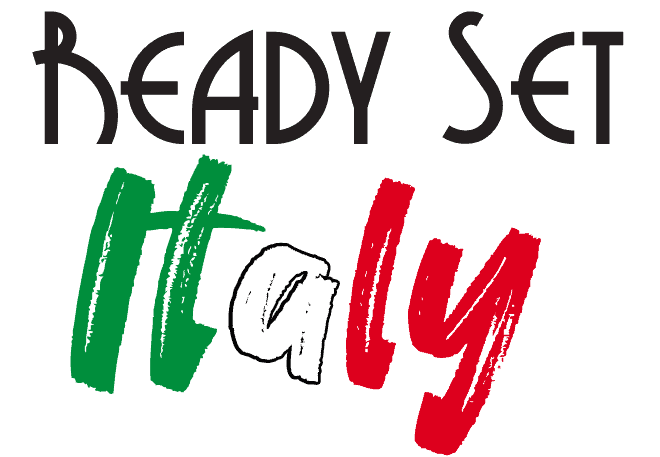Although Milan (Milano) might not be the first Italian city that comes to mind when making travel plans, we find that it’s full of historical sites and attractions.
We wrote this guide because many people tend to skip Milan, and that is a shame. Despite its reputation as Italy’s fashion, financial, and commercial hub, the city has a significant history and a vibrant cultural legacy. So, if you’re flying into Milan on your next trip to Italy, consider staying at least one night so that you can see what this amazing city has to offer!
Milan has preserved various artistic, cultural, and architectural treasures for you to enjoy due to its long history and the significant wealth it has amassed due to its advantageous business location.
Best Things to See and Do in Milan
The Piazza del Duomo, in front of the cathedral, is the Metro hub. It’s also a perfect starting point when visiting Milan. There, won’t be able to miss the Duomo di Milano. If you stand beneath the stone market arcade before the 13th-century Palace della Ragione in the little Piazza dei Mercanti, you’ll think you’ve traveled back in time.
Go back a few centuries to enter the Galleria Vittorio Emanuele II. It features a beautiful dome and faces the Cathedral. Pass through it to arrive in front of the most renowned opera house in the world. You can walk to all of it in five minutes.
With this helpful guide to things to see and do in Milan, Italy you’ll uncover these and even more of the best places to visit.
Milan Cathedral: The Pinnacle Of Gothic Architecture
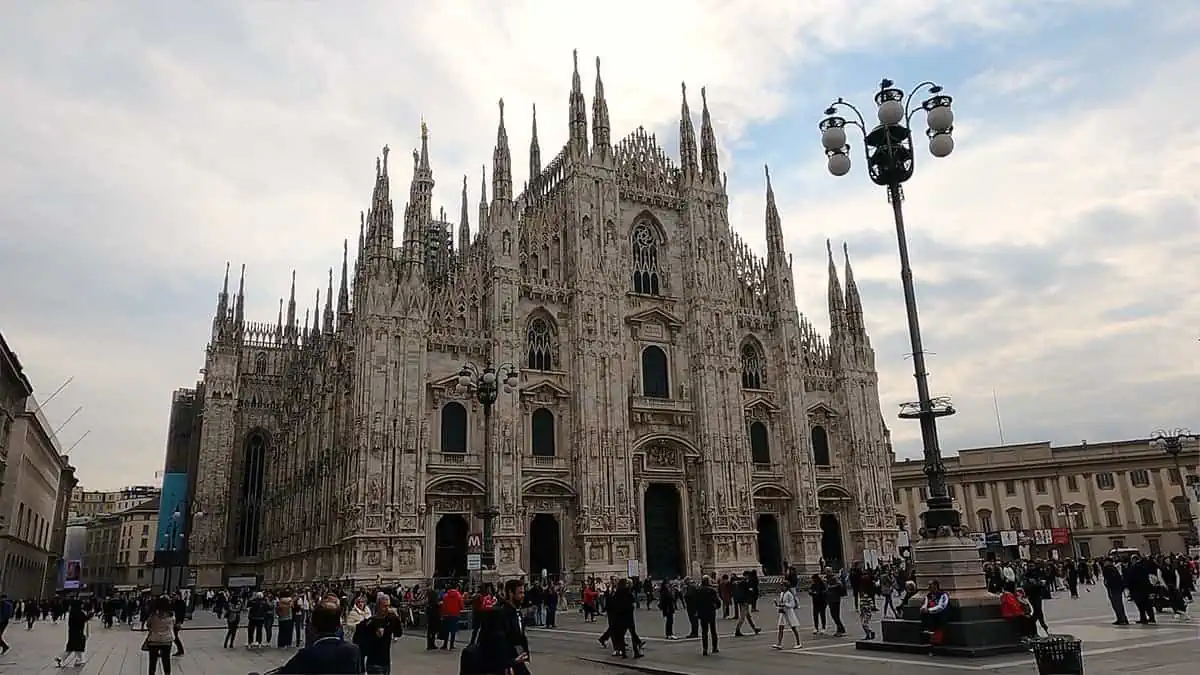
It is one of the world’s largest and most majestic churches. It can accommodate up to 40,000 people. The enormous Cathedral of Santa Maria Nascente is the pinnacle of the Flamboyant Gothic architectural style. The Milanese refer to it simply as “Il Duomo.” Although it was started in the 14th century, Napoleon’s reign in the early 1800s saw the completion of the façade.
The outside is embellished with 2,245 marble figures, and 135 beautifully sculpted stone pinnacles cap the roof. With its 52 enormous pillars, the dark interior contrasts sharply with the dazzling and intricately decorated façade. The cathedral leaves an impressive impression. The oldest stained-glass windows are in the south aisle and are among the largest in the world. They are located in the nave and date mainly from the 15th and 16th centuries.
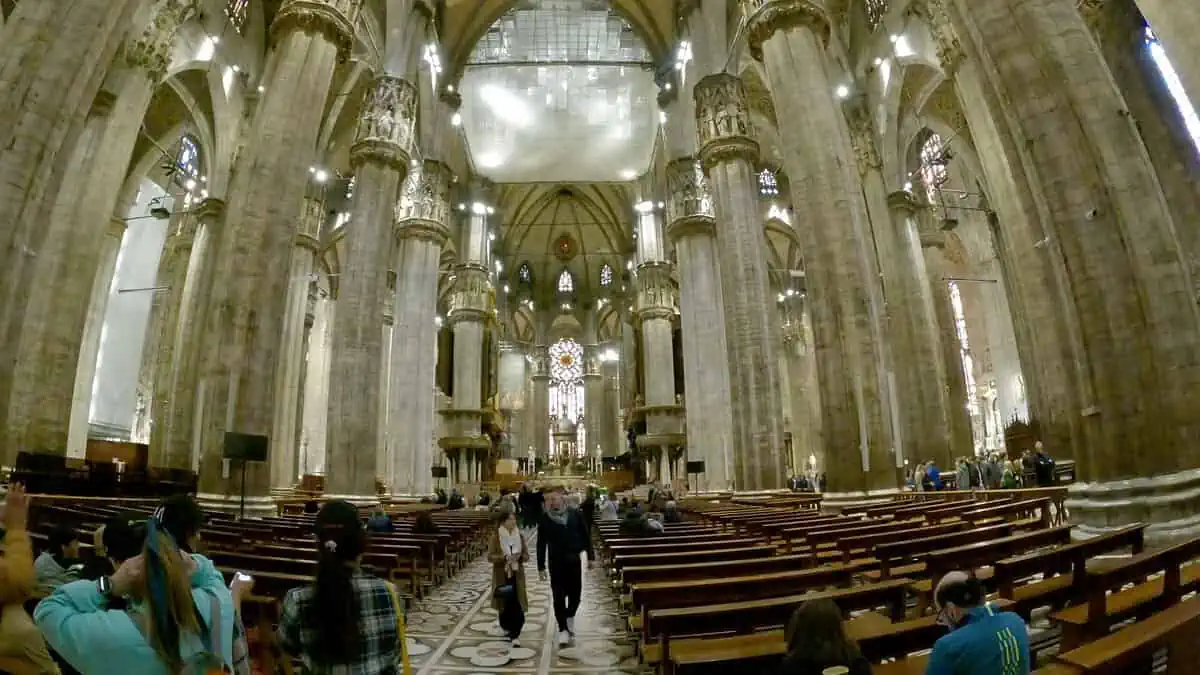
Attractions include the 16th-century tomb of Gian Giacomo Medici and the seven-branched bronze candelabrum by Nicholas of Verdun (about 1200). Also, the jewel-encrusted gold reliquary of San Carlo Borromeo in the octagonal Borromeo Chapel off the crypt. The choir contains elaborately carved panels behind the high altar and misericords under the seats.
The treasury, which contains gold and silver artwork from the fourth to the 17th century, is located in the south sacristy. A walk across the cathedral’s roof is a unique experience, providing views of the entire city and, on clear days, the snow-capped Alps. All but the final 73 steps up to the dome’s platform are ascended via the elevator.
You can enter the fourth-century Battistero di San Giovanni alle Fonti and the fourth-century Basilica di Santa Tecla foundations. It was uncovered during the Milan Metro system construction, at the front of the Duomo, close to the central entryway, by descending under Piazza del Duomo.
Piazza del Duomo: The Most Breathtaking Square
The Piazza del Duomo serves as Milan’s main square. It is a huge open area with some imposing architectural and artistic works.
If you’re visiting Milan, this needs to be your first stop. From here, you can see the magnificent Cathedral and the other structures.
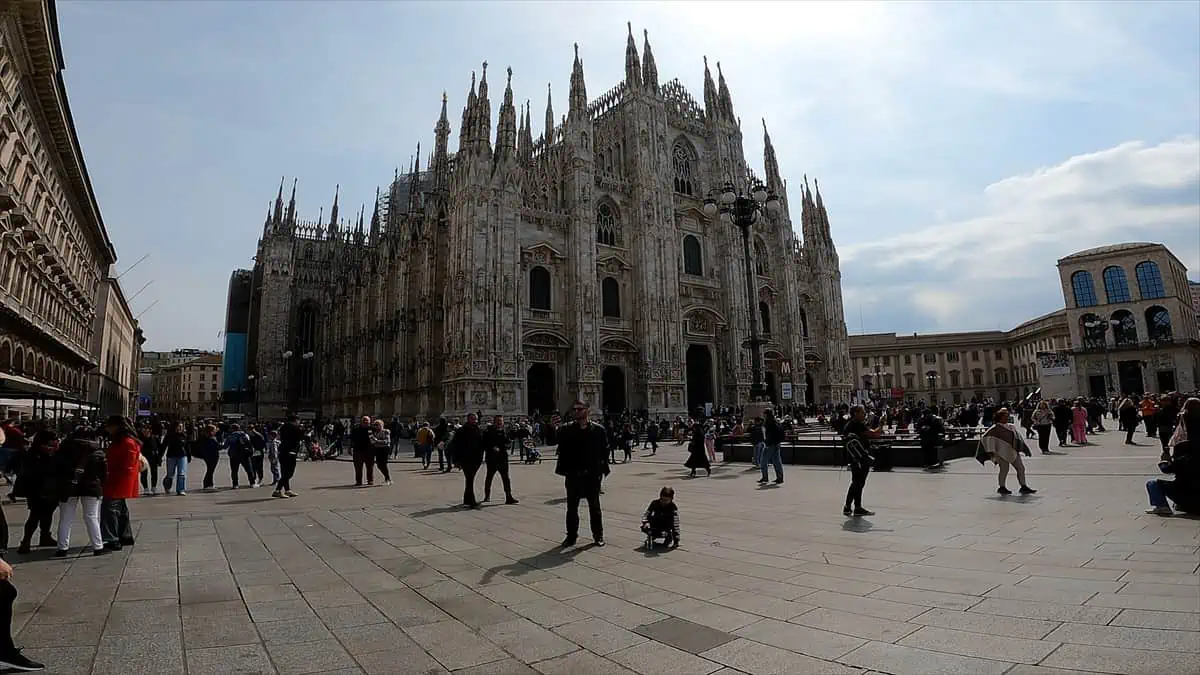
The magnificent statue of Vittorio Emanuel, the first King of a united Italy, is in the center of the Piazza, and the magnificent Royal Palace is on one side.
There are also many upscale stores, eateries, and bars to visit. Shop to your heart’s delight or sip coffee as you observe the crowds of visitors and residents going about their everyday lives.
Explore the Galleria Vittorio Emanuele II’s Upscale Stores And Chic Cafés.
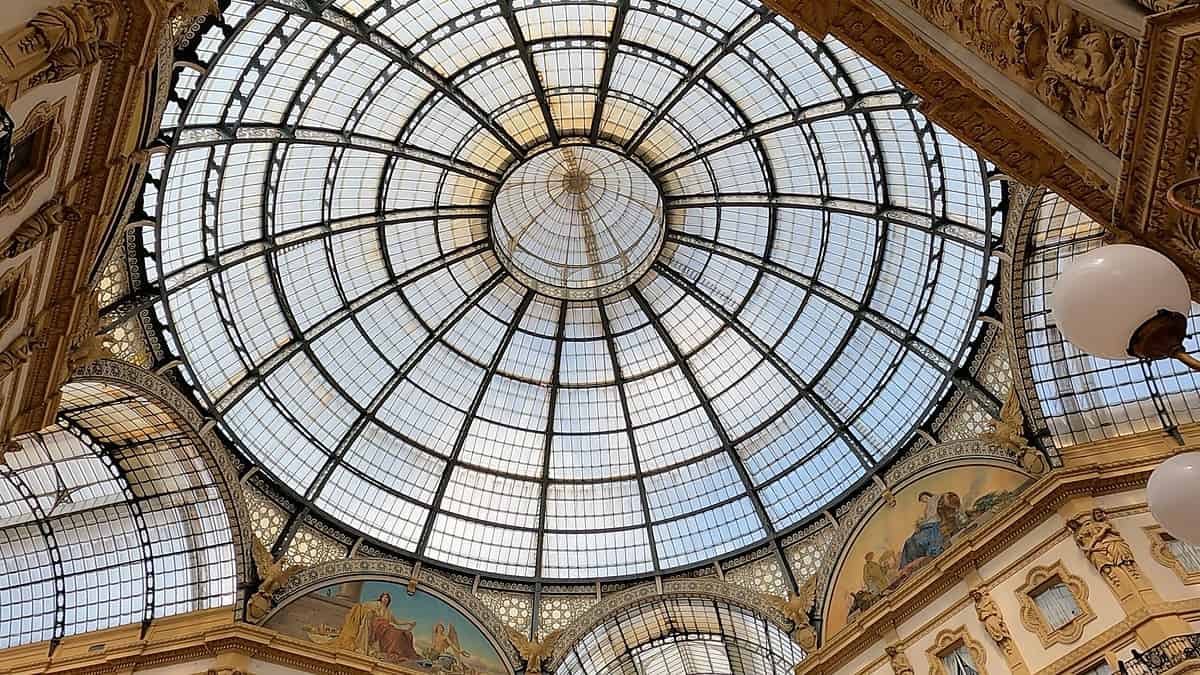
Giuseppe Mengoni created the great Galleria Vittorio Emanuele II, which forms one side of the Piazza del Duomo and opens to the Piazza della Scala on the other. It was constructed between 1865 and 1877. With a dome that rose 48 meters above its mosaic floor, it was the biggest shopping mall in Europe.
It was the country’s first example of modern architecture. It is now regarded as a magnificent example of industrial iron and glass architecture from the 19th century. And it’s still a stunning, energetic location where folks gather for lunch or coffee in its classy cafés and peruse its opulent stores. The locals of Milan refer to it as “il salotto” because it is such an integral part of daily life there (the salon).
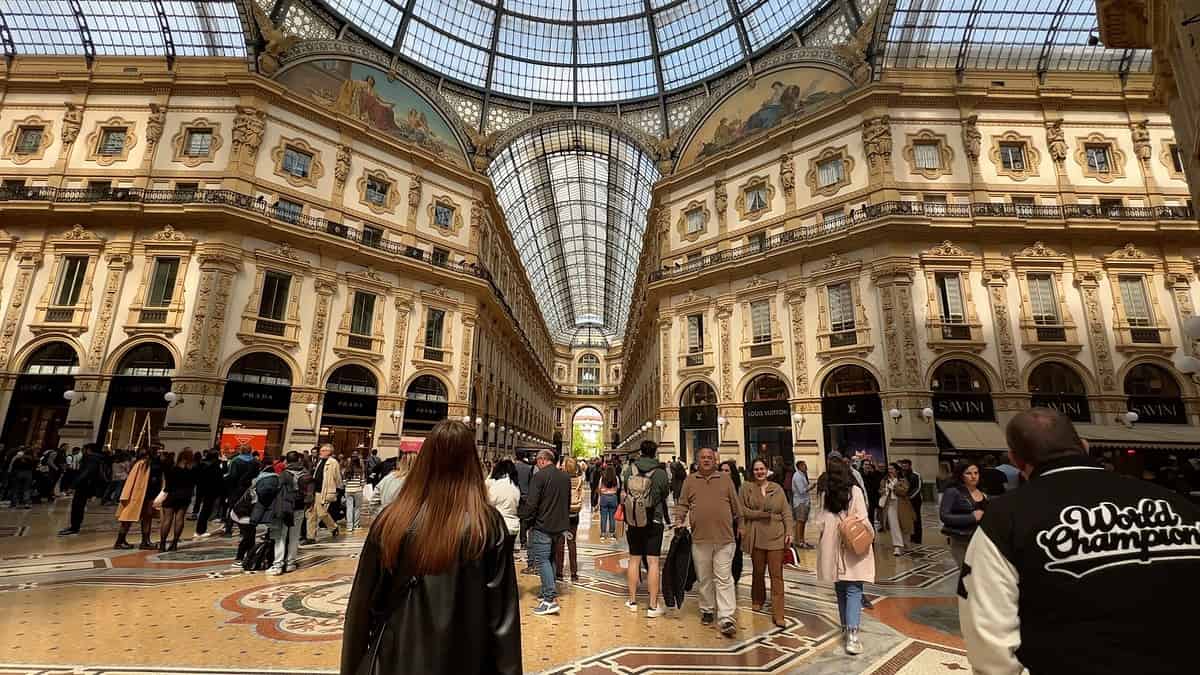
Castello Sforzesco: Italian History In Art
Initially constructed in 1368 and restored in 1450, the Castle Sforzesco was owned by the Visconti and Sforza dynasties. They are the ones who controlled Milan from 1277 to 1447 and from 1450 to 1535. The previous gate tower was replaced in 1905 with the 70-meter Torre de Filarete.
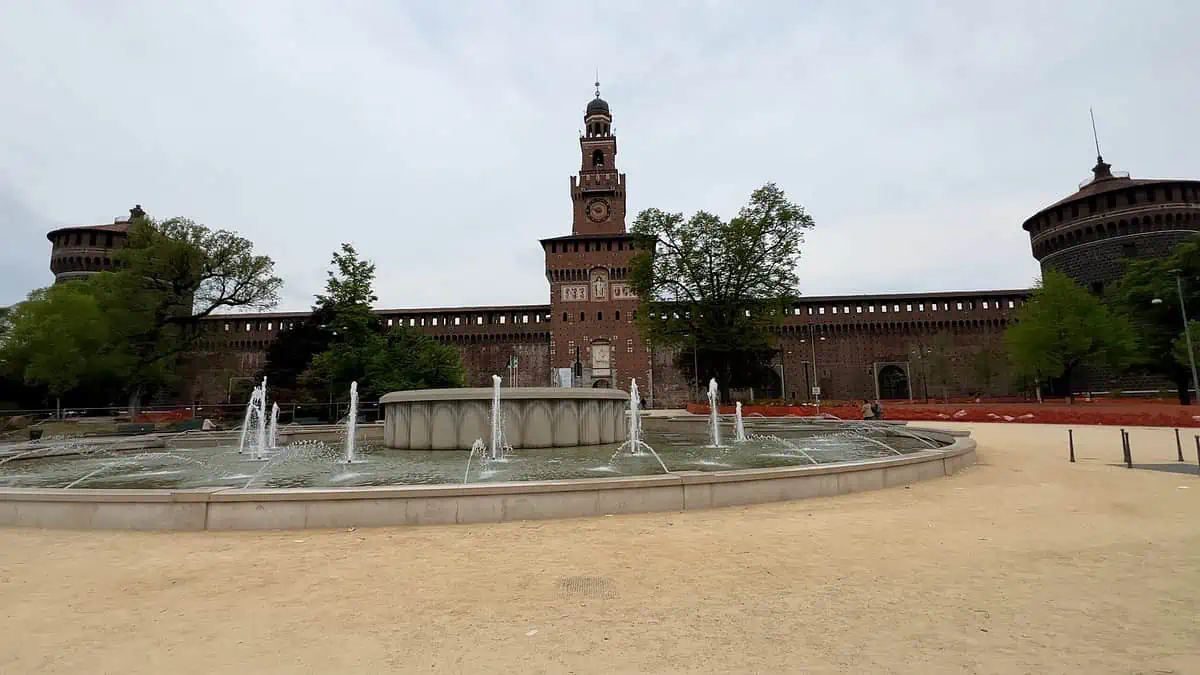
The Castello is home to a group of museums called the Musei del Castello Sforzesco, one of which has sculptures. The Pietà Rondanini, Michelangelo’s final masterwork, was included in the collection when it was transported from Rome’s Palace Rondanini in 1953.
Other museums have collections of ornamental art, Egyptian and ancient artifacts, musical artifacts, and medieval armor and weaponry arsenal.
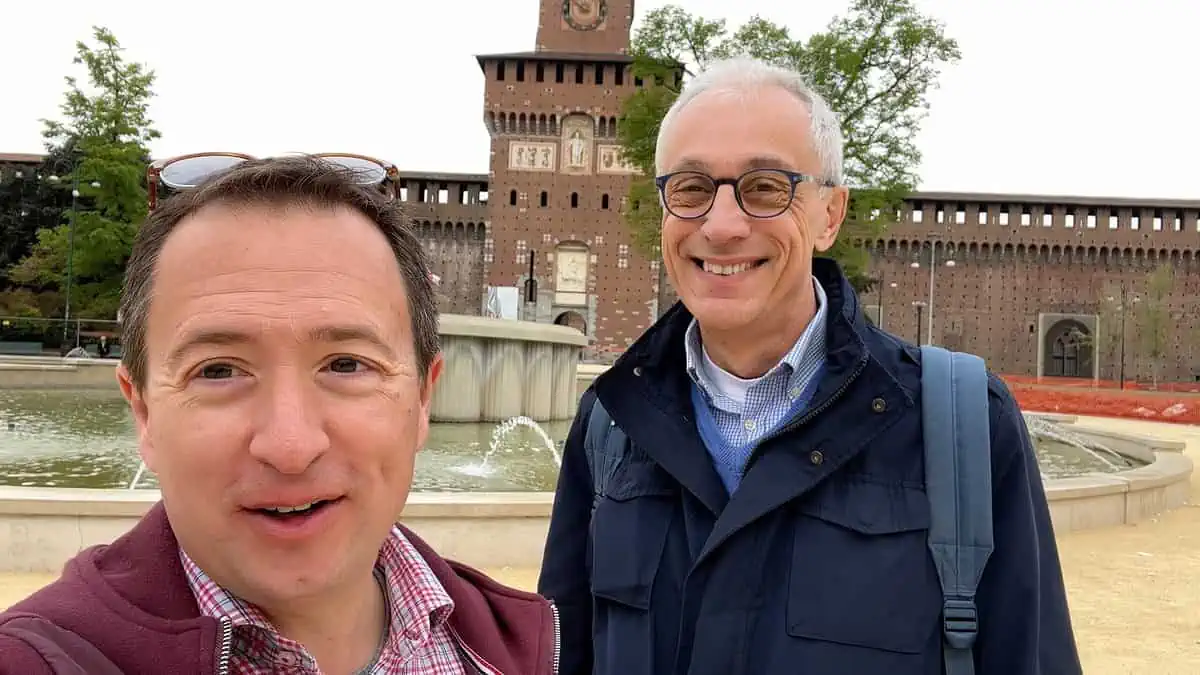
The photo collection features works by Antonello da Messina, Bellini, Correggio, Mantegna, Bergognone, Foppa, Lotto, and Tintoretto. A passageway leads to the park, which used to be the dukes of Milan’s garden. It later served as a military training area between Castello’s two rear courtyards.
Pinacoteca di Brera: A Must-Visit Gallery In Milan
The Brera Art Gallery, also known as the Pinacoteca di Brera, is a must-visit location for admirers of Italian art. Our favorite museum in Milan was undoubtedly this one.
It contains artwork from the 13th to the 20th century. It is the main public gallery in Milan devoted to Italian paintings. Many artists, including Raphael, Bramantino, and Mantegana, have pieces in the museum. We had a warm spot for Venice, which contributed to the fact that we liked the paintings by Canaletto.
When we visited, we also found the open demonstrations of restoration work on several works interesting. As a result, the repair process can be observed, which is extremely exciting.
There was a fee to visit, and when we went, we had to buy our tickets online in advance. Afterwards, consider having an aperitif (aperitivo in Italian) in the same Brera district!
Teatro alla Scala: Milan’s Famous Opera House
La Scala opera house, which seats 2,800 people, is regarded as the most prestigious opera venue in the world. Its audiences are renowned (and dreaded) as the most demanding in Italy.
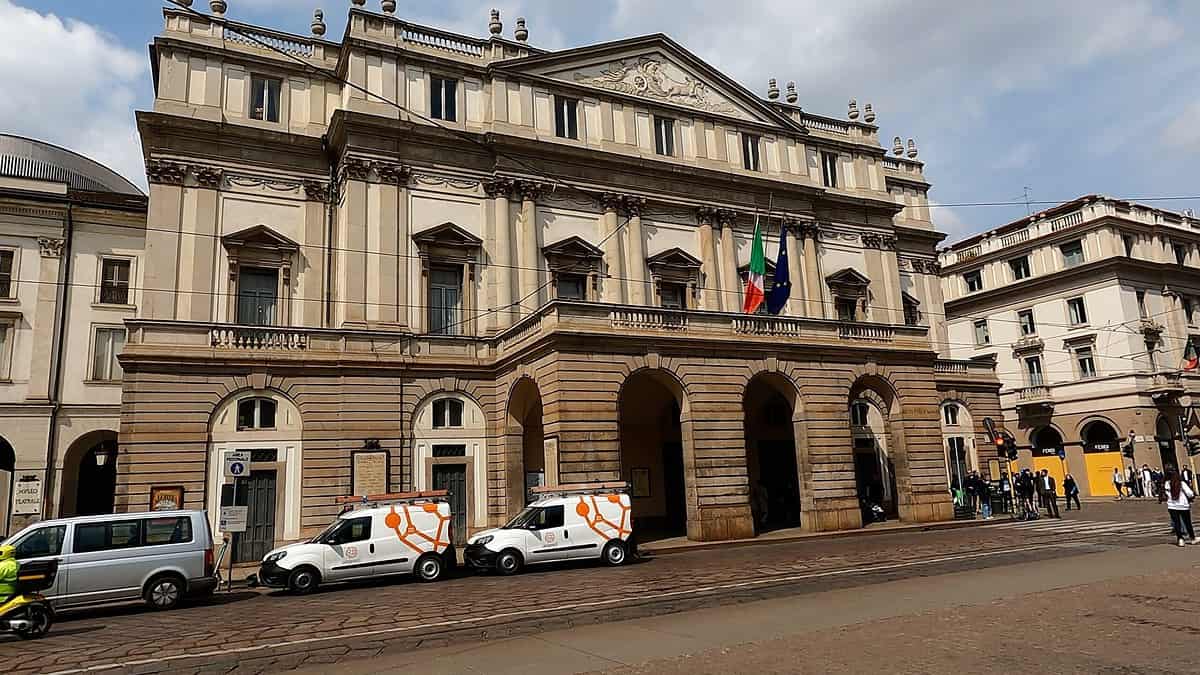
The season spans from early December to early May. However, tickets are frequently hard to come by. The concierge at your hotel is the best place to purchase tickets, but it’s also a good idea to inquire at the box office.
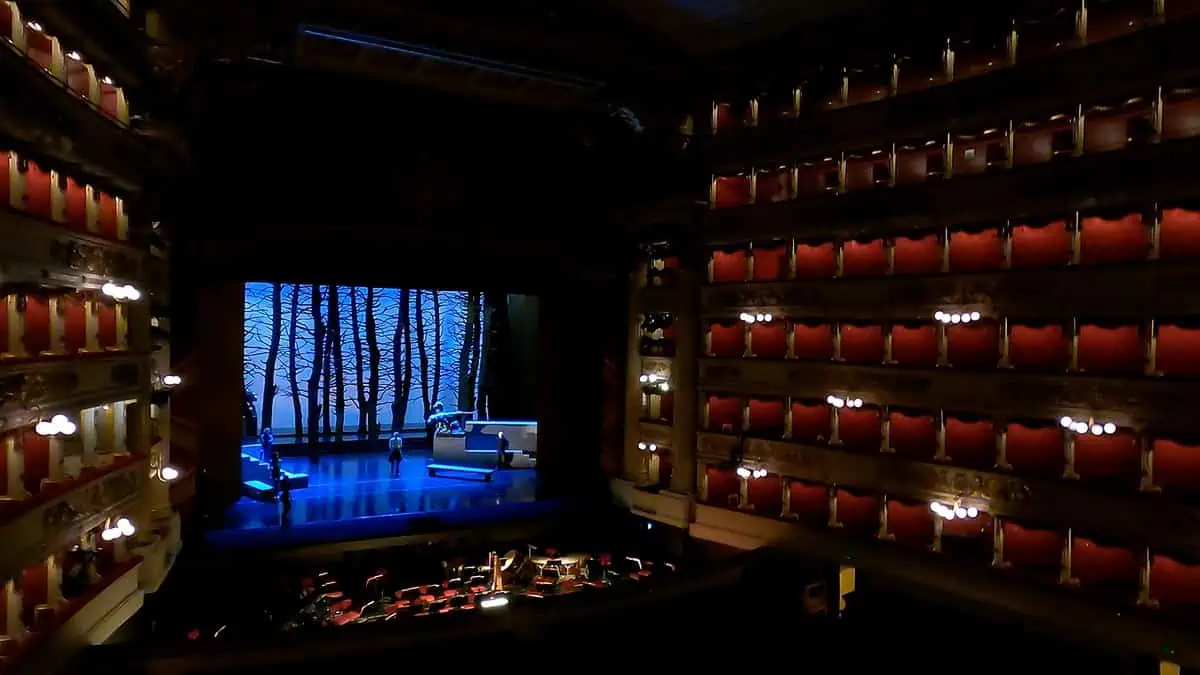
The Museo Teatrale alla Scala is located in the same building and houses a collection of costumes from significant performances and historical and personal artifacts of famous people who performed and whose works were performed at La Scala, such as Verdi, Rossini, and great conductor Arturo Toscanini. If there isn’t a rehearsal, the museum allows visitors access to the vast opera house’s interior.
Leonardo da Vinci’s The Last Supper At Santa Maria delle Grazie
Bramante, one of Italy’s most significant Renaissance architects, created the enormous six-sided dome of the Gothic brick church of Santa Maria delle Grazie in the Corso Magenta, built in 1465.
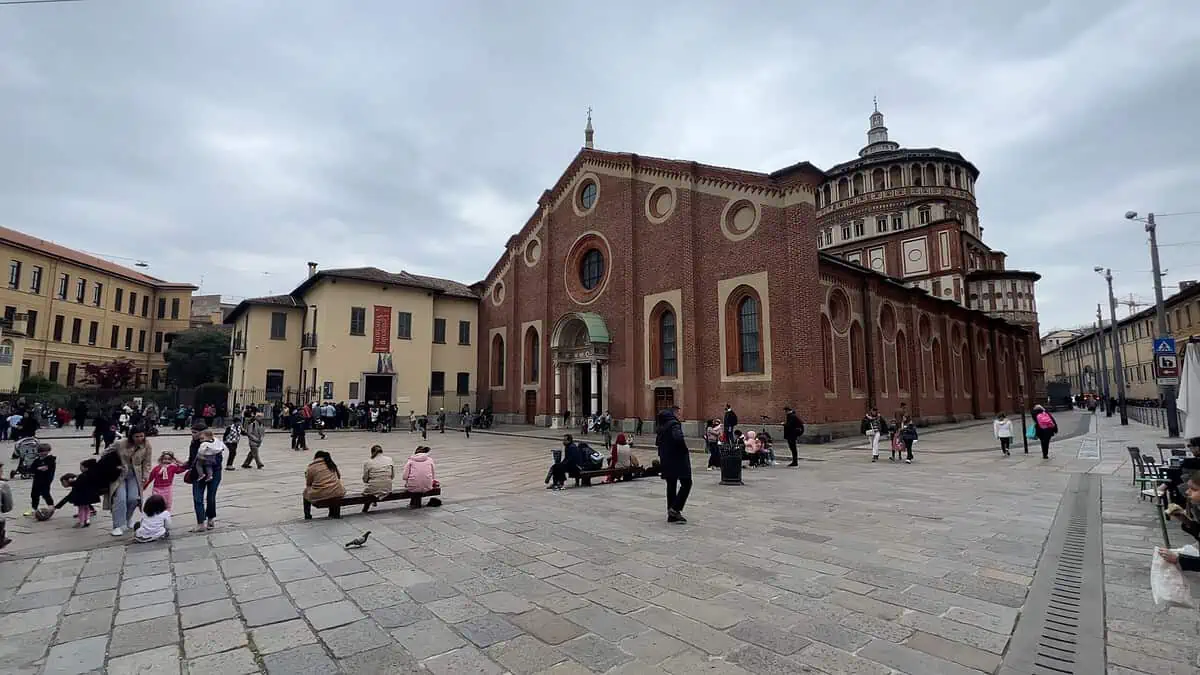
The church and the adjacent refectory where Leonardo da Vinci painted The Last Supper were severely damaged during World War II. During restoration work, historic sgraffito paintings in the dome came to light. The Madonna delle Grazie Baroque chapel has an altarpiece of the Madonna at the end of the north aisle.
But, the most popular draw for visitors to Santa Maria delle Grazie is the iconic painting by Leonardo da Vinci on the wall of the old Dominican monastery’s refectory. The Cenacolo Vinciano, known in this location, was tempera painted on the wall between 1495 and 1497.
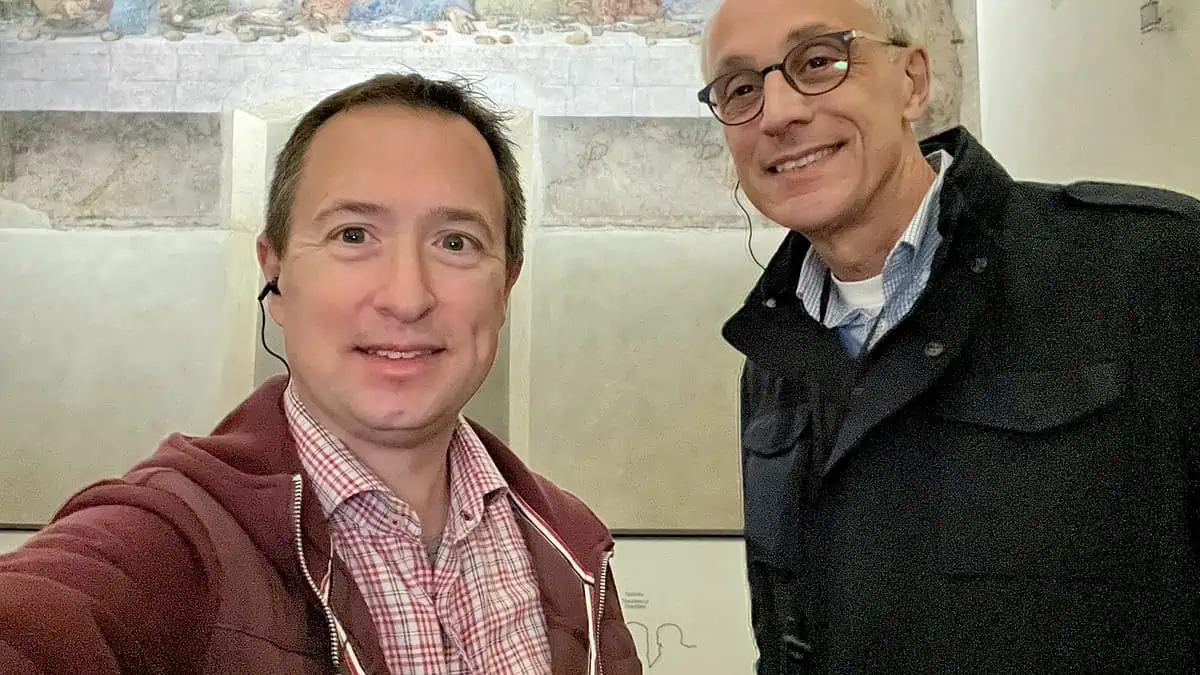
Da Vinci’s dramatic depiction of the scenario was highly original and signaled a crucial new stage in the history of painting. It replaces prior static depictions of Christ’s last lunch with his followers. The painting has undergone multiple restoration attempts, a process that will likely never be fully finished. Before a piece of the chamber was demolished and exposed, it had started to flake off.
The Charming Basilica di Sant’Ambrogio
St. Ambrose, born in Milan and the city’s patron saint, established the church of Sant’Ambrogio in 386. The current church was constructed in the 12th century around the choir of an earlier church from the ninth century, and it is a masterpiece of Romanesque architecture.
There is much to see here, starting with the sizable portico, dating from the ninth century. The atrium is regarded as one of Europe’s finest Romanesque examples due to its carved stone capitals and portal.
Make sure to look at the late Romanesque-carved pulpit inside and the lavishly carved Stilicone coffin from the fourth century. The high altar’s case (paliotto), a Carolingian art masterpiece, was made in 835 in Milan or Rheims. The ancient Sacello di San Vittore, entered through the final chapel on the right, has a simple mosaic dome to miss.
Cimitero Monumentale: See Milan’s Most Famous Tombstones
It’s simple to forget that Italy also has some exceptional specimens from the Art Nouveau period, known here as Stile Liberty, when considering the country’s magnificent architecture and artwork from the Ancient Greek, Roman, medieval, and Renaissance eras.
Cimitero Monumentale is an outdoor exhibition of Art Nouveau sculptures, many of which were created by renowned Italian sculptors, located next to Stazione Porta Garibaldi rail station. These monuments mark Milan’s affluent and famous tombs from the late 1800s through the mid-20th century, hidden behind a grand and extravagant striped marble portico.
San Maurizio and the Archaeology Museum: Uncovering The Ancient Remains Of Milan
Many people consider the San Maurizio church’s interior the most beautiful in Milan. The whole interior of the church, constructed in the early 1500s as the church for a convent of Benedictine nuns, is decorated with paintings of biblical events. These paintings are not just by some of the best Lombard painters of the 16th century, primarily Bernardino Luini and his sons, but the colors seem to have just been painted yesterday. Two portions make up the long nave, with the back one allocated for the nuns’ choir.
Roman circus ruins, and remnants of Roman fortifications were covered by the expansive monastery, which is now home to the Civico Museo Archeologico (Archaeology Museum), where you can view these unearthed relics of Roman Milan.
Together with the historical history of Milan, you may also see Greek, Etruscan, and Roman artifacts from other parts of Italy, such as bronze and stone sculptures. The bronze head, a female statue with folded draperies, and Maximilian’s sculpture from the third century are all excellent examples.
Spend a Night in Naviglio
Naviglio is one of the best areas to see in Milan at night for the young people who attend the canal-side cafés and music clubs. Visit throughout the day for the restaurants, stores, artist workshops, and various events hosted here, even though it’s busiest at night – so, if this is something of interest, you should spend the night in this area.
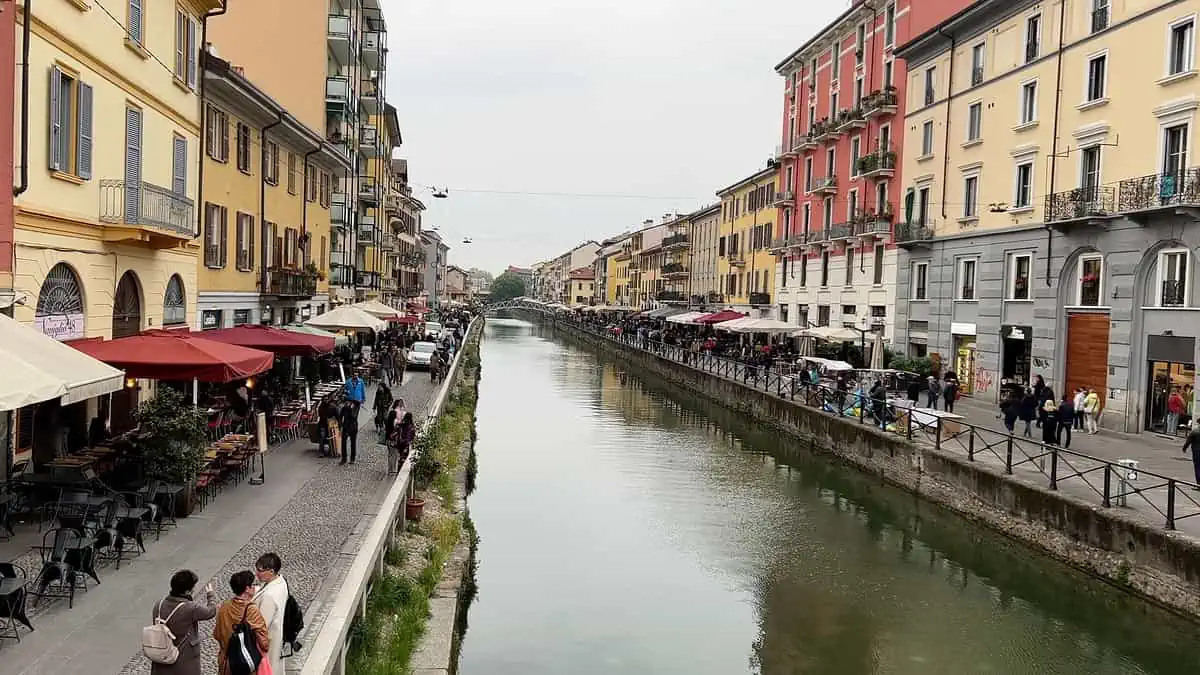
The Festa di Fiori, which takes place in April, fills the district beside the canal with flowers, while the Festa del Naviglio features concerts, processions, crafts, and an antique market. For the Sagra di San Cristoforo (Festival of Saint Christopher), barges along the canals are adorned in mid-June, and the Orchestra Sinfonica di Milano Giuseppe Verdi gives about 50 concerts on Thursday and Friday evenings and Sunday afternoons at the Auditorium di Milano.
Santa Maria Presso San Satiro: An Amazing Optical Illusion
This church is located near Piazza del Duomo on a retail street, although it appears modest and uninteresting from the exterior. Walk inside to discover that it is rather abundant, with a deep, domed, and majestic sanctuary extending into an apse that is almost as long as the body of the church.
But is it? Keep an eye on it as you move forward and observe how it transforms into an almost flat wall behind the altar. The architect Bramante created an optical illusion as a cunning ruse to impart grandeur to a church with constrained space.
Discover The Poldi Pezzoli Museum: Italy’s Museum Of Lace And Needlework
This art museum was founded in the 19th century as the personal collection of Gian Giacomo Poldi Pezzoli and his mother, Rosa Trivulzio, and is located in a stunning ancient noble home. Paintings by painters like Botticelli, Mantegna, Piero della Francesca, Guard, and others, as well as gold, silver, bronzes, porcelains, Etruscan pottery, armor, and weaponry, are among the highlights of the exhibit.
The museum’s collection of textiles includes Flemish and Persian carpets, tapestries, a sizable number of pieces of hand-crafted lace, and very rare needlework created by Botticelli.
The home is enjoyable to view since artwork, and other collections are shown in various room settings and gallery spaces. Many rooms were redecorated in the middle of the nineteenth century to display the collections. One ticket allows entry to all four buildings comprising the Circuito delle Case Museo di Milano or Milan Museum House Network.
Museo Bagatti Valsecchi: Walk Through A Renaissance Palace
This location is very intriguing to visit for several reasons. To recreate the interior of their Renaissance palace in the 19th century, two brothers spent their entire lives amassing furniture and decorative items.
Instead of rooms filled with display cases and walls covered in artwork, you’ll see an inhabitable house from that period. Thanks to the great English signage, you can learn more about how they began collecting. The thrill of the chase is thus mixed up with each piece’s historical and artistic details.
The furniture, tapestries, glassware, books, kid’s stuff, and paintings by Renaissance masters are what I enjoy seeing most, though. The museum is one of four prestigious mansions that make up the Circuito delle Case Museum di Milano, which you may enter with a single ticket.
Leonardo da Vinci National Museum of Science and Technology
The museum, housed in a former olivetan monastery, provides an overview of the development of science and technology from the early days of discovery to the present. The Leonardo da Vinci Exhibition, built using da Vinci’s drawings, is fascinating because it features functional replicas of many of his inventions and machines.
Equipment from Galileo, Newton, and Volta is on display in the physics exhibitions, including sections on optics, acoustics, telegraphy, transit, ships, railroads, flying, metallurgy, motor vehicles, timekeeping, and lumber. Almost 15,000 technical and scientific items collectively depict Italian industry, science, and technology development.
Parco Sempione: Among The Greatest Public Gardens In Milan
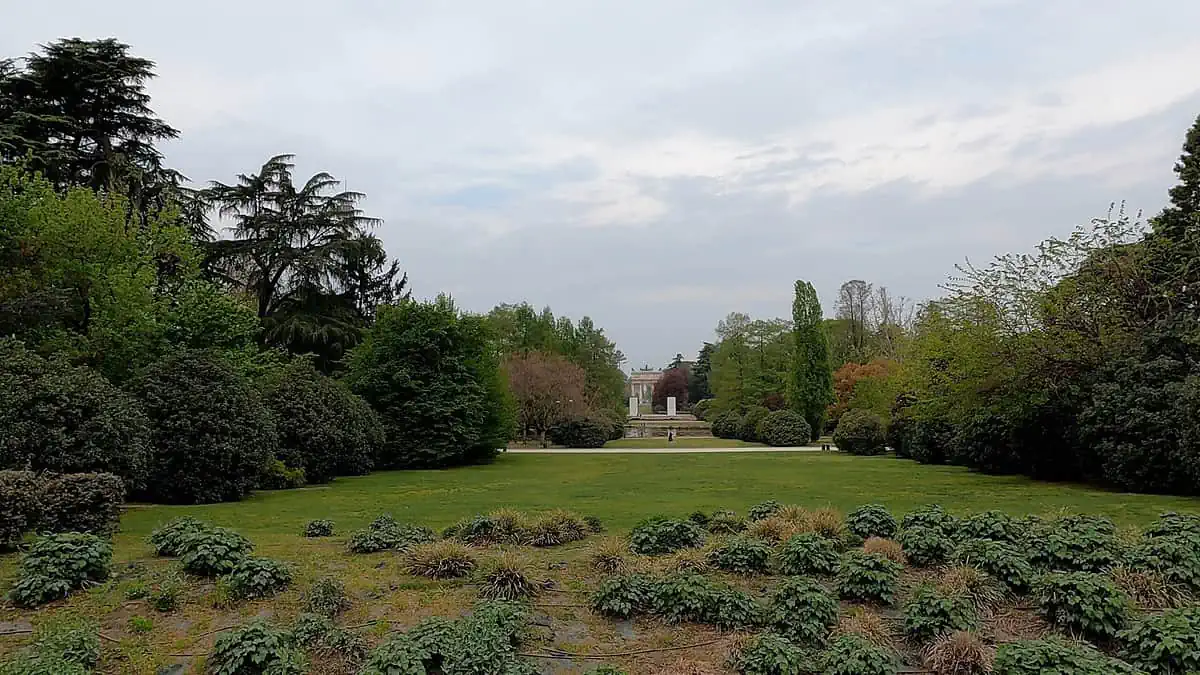
When your eyes have had enough of stone and architecture, Parco Sempione’s English-style landscape is a good spot to rest them and walk the winding paths. People use the park to jog, walk, eat lunch, and take their kids. All summer long, concerts are held here.
The enormous Arco della Pace, also known as the Peace Arch, is located at the entrance, and the 1933 Torre Branco, which was created by renowned architect Gio Ponte, soars over the park. You can see Milan and the Alps on days when the sky is clear. If you like Art Nouveau, don’t miss the entertaining aquarium pavilion on Via Gadio, which is at the park’s edge.
Palazzo dell’Arte: An Overview of Design From Italy
A prime example of Fascist-era architecture is the building next to Parco Sempione, which was built in 1933 to showcase the most prestigious Italian design exhibition (the style is called Stripped Classicism, but in Italy, it is almost always a product of the Fascist regime, whose leaders liked it).
But it serves well as a gallery for art and design, and there are constantly prestigious exhibitions within, frequently with a global reach. Retrospectives of prominent modernists like Andy Warhol or Gio Ponte can be included, as well as investigations into the origins and topics of tribal art and even culinary design. The best Italian-designed objects throughout history are featured in the permanent displays, highlighting Italian design.
The Beautiful Basilica Of Sant’Eustorgio
The beautiful campanile on the Romanesque basilica of Sant’Eustorgio was added a century after the basilica’s construction in the 12th and 13th centuries. In 1863, the facade was finally added. One of the first instances of Renaissance architecture, the Cappella Portinari, built by Michelozzo between 1462 and 1468, may be found outside the choir. Vincenzo Foppa painted the frescoes.
Another Early Christian church, San Lorenzo Maggiore, is close by and not far from Sant’Eustorgio, the chapel of Saint Aquilinus. It has mosaics from the fourth century, although its Renaissance dome was erected in 1574. The portico of sixteen Corinthian columns in front of the cathedral is the largest Roman Mediolanum monument still standing.
Milan Fashion Shopping – The Quadrilatero della Moda
The Quadrilatero della Moda is the best place to shop in Milan. It is where the most famous stores of Italian and international designers are located. The four premier streets are Via Montenapoleone, Via della Spiga, Via Manzoni, and Corso Venezia. Each is adorned with storefronts showcasing the most recent styles and fashion developments.
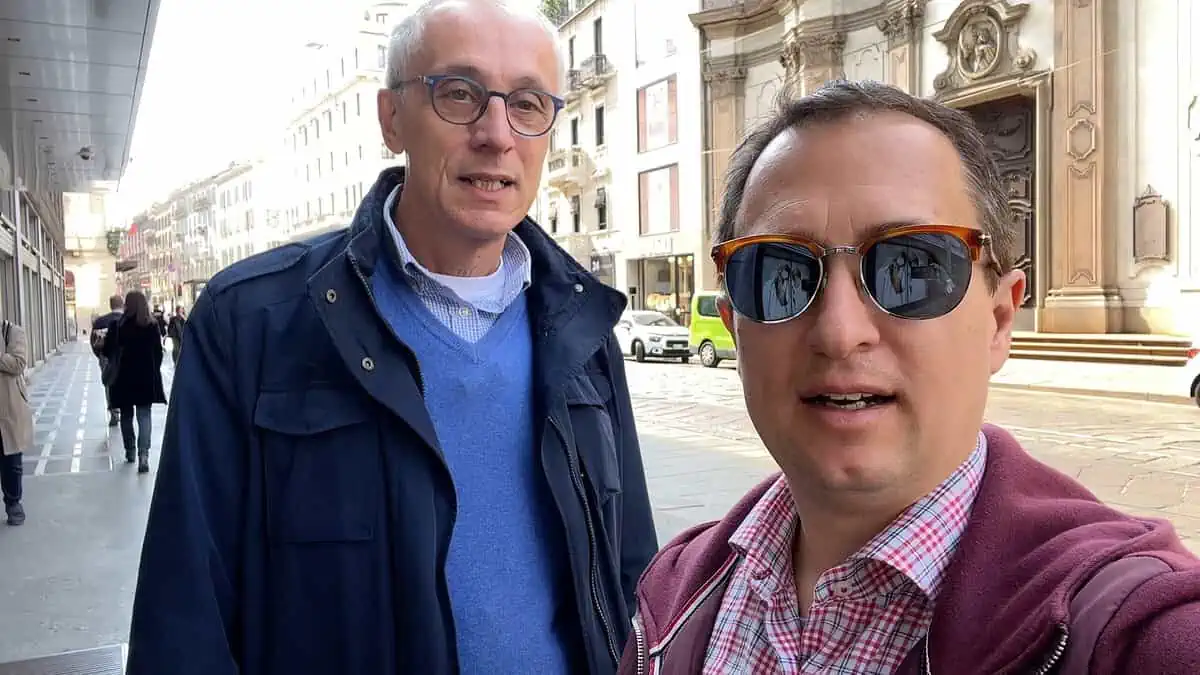
Together with the Avenue des Champs Élysées in Paris, this is one of the world’s most well-known designer shopping alleys. All the top brands here include Prada, Armani, Fendi, Valentino, Missoni, Trussardi, and others. Keep in mind that informal shopping inside the stores is prohibited unless you are dressed appropriately. Most visitors merely ogle the striking windows, where the presentations are as theatrical as the clothing.
Every autumn, Milan designers—the crème of the world’s fashion houses—send their top models to Milano Moda Donna, or Milan Fashion Week, to walk the runways. At the peak of the fashion year, everyone in Milan seems to transform into a model for the week, and it’s a terrific time for people to watch even though you can’t enter the shows without credentials.
Pirelli Hangar Bicocca: Exquisite Art and Architecture
A former locomotive manufacturing plant has been transformed into a hub for modern art and cultural initiatives in one of the most vibrant and well-liked of-the-art neighborhoods rising from former industrial zones.
Two galleries are occupied with shifting temporary exhibits, and the third is home to the striking permanent installation The Seven Heavenly Palaces. Visitors are towered over by a group of concrete towers by German artist Anselm Kiefer. The show is accompanied by “Bubbles” that contain in-depth texts, movies, audio, and interactive activities related to the exhibitions or modern art.
Civica Galleria d’Arte Moderna: A Gallery of Modern Art
This palace facing the Giardini Pubblici, served as Napoleon’s residence while controlling Milan. It still has the original stucco work and decorative elements inside, which adds to its appeal as a display for Milan’s vast collection of modern art.
Although there is a focus on Italian art, with works by Renoir, Picasso, Matisse, Rouault, Modigliani, Dufy, and Vuillard, the collections are far more extensive. Neoclassical sculpture created by Canova and his contemporaries is well represented.
An English-style garden, a botanic garden, and the public gardens’ lawns, flower beds, and play areas are all located on the property. The Museo Civico di Storia Naturale (Museum of Natural History) is next to the Giardini Pubblici and features approximately 100 intricate dioramas depicting the earth’s biodiversity. The paleontology exhibit is particularly impressive, with magnificent pliosaurs hanging from the ceiling as its centerpiece.
Piazza dei Mercanti: Milan’s Main Market Square
The Piazza dei Mercanti, once the heart of Milan during the Middle Ages, was a hive of commerce and trade marketplaces.
This square, which is between the Piazza dei Duomo and the Piazza Corduiso, is close to all of Milan’s main sights and can be reached on foot.
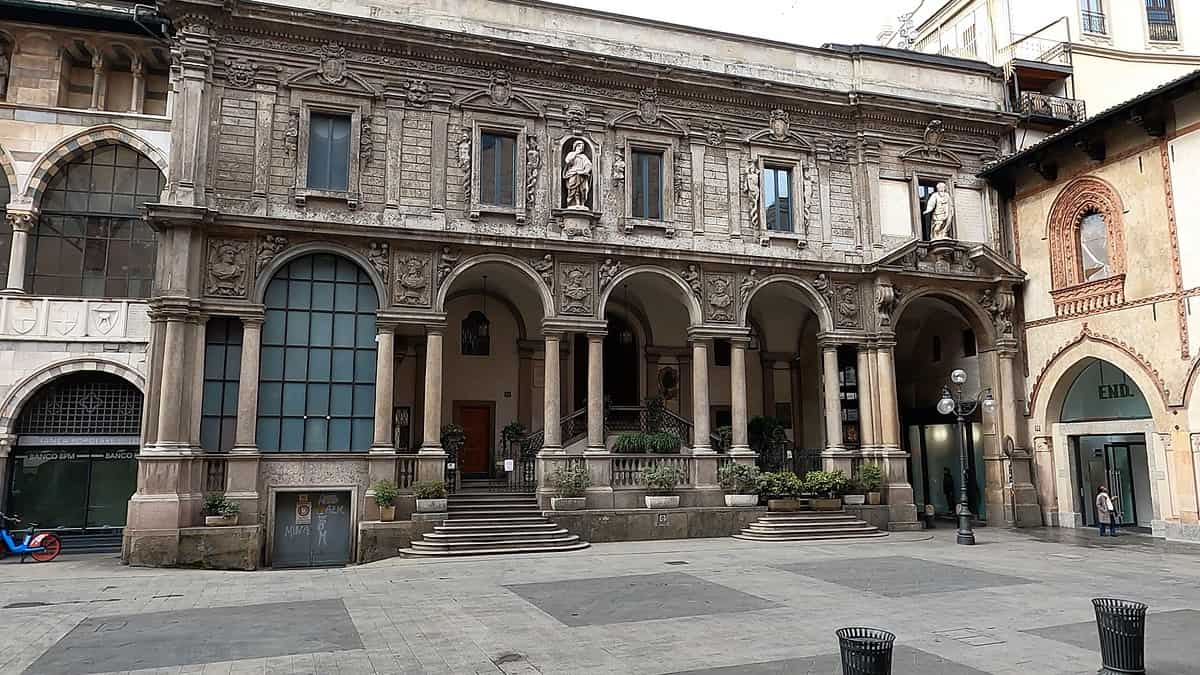
Some of the important buildings on the square are the Pallaza della Ragione, the Pallaza delle Scuole Palatine, and the Loggia degli Osii.
There may also be important statues and monuments here, some of which come from Roman times.
Visit this square to take in the beautiful architecture and the history of this area of Milan.
Enjoy A Pleasant Visit To The Milan Archaeology Museum
This museum, devoted to ancient Milan’s history, is incredibly educational and offers a view into the past.
The museum’s first section, which is housed in the Church di San Maurizio al Monastero Maggiore, provides information on the history of ancient Mediolanum. In contrast, the second section, which is in the basement, features a variety of paintings and sculptures.
Many archaeological artifacts, theatrical masks, ceramics, and armor are among the vast collection’s many items.
This fascinating museum explores Milan’s history, including the Middle Ages, influences from Etruscan civilization, and the ancient Greeks.
AC Milan San Siro Stadium: A Historical Place For Italian Soccer
Since 1926, the San Siro has been one of the best places to watch sports in Italy. It may be one of the most famous and well-known stadiums in the world.
It is one of Europe’s biggest stadiums and can hold just over 80,000 people. During the World Cups of 1934 and 1990, it was an important venue. When you visit, you can see the stadium’s recognizable circular towers supporting the enormous tiers and the enormous roof that partially covers the ground.
This magnificent stadium is home to AC Milan and Inter Milan, and the atmosphere there is incredible.
Don’t forget to stop by the joint museum to learn more about the history of these two famous Italian clubs.
Basilica di San Lorenzo: Milan’s Oldest Church
The Basilica of San Lorenzo, a catholic church, is one of Milan’s more significant ecclesiastical structures. It is located in the southwest corner of the city.
It is one of Milan’s earliest churches and was built in 402.
A Maximian the Emperor statue stands in the courtyard and is framed by many colonnades.
Although the inside is highly gloomy and speaks of great age, there is an excellent high altar and the chapel of Saint Aquilino, which has stunning mosaics and ceiling art.
Milan’s Tallest Building: Torre Branca
The enormous 108.6-meter-tall Torre Branca is an observation tower part of the Parco Sempione.
The tower, which Gio Ponti designed and once known as the Torre Littoria, was built in 1933.
It was closed during the 1970s for renovations but is now back in use.
Take the elevator up to the top of this magnificent building and enter the tower. From here, you get unmatched views of Milan and can see for kilometers.
On clear days, you can see the vast city spread out before you, the Alps, and the Apennines.
San Bernardino alle Ossa: The Church With The Bone Chapel
The Catholic church known as San Bernardino alle Ossa was founded around 1145. The current church, which was dedicated in 1776, was built in its place after the first was destroyed by fire.
Although the church may not appear to be all that impressive from the outside, it is actually rather lovely inside. It is particularly well renowned for its ossuary or bone chapel.
Like Rome’s Capuchin Crypt, this tiny side chapel is adorned with human bones.
The reason behind this may intrigue you. In 1210, there was no more room in the graveyard next to the church. As a result, a room created just for this purpose was used to store the dead people’s bones. It’s undoubtedly a spectacular sight to behold.
The Duomo is within a 5-minute walk from this church. The ossuary is located directly across from the main church and is open to the public for free.
Shoah Memorial: The Milano Train Station Deportation
Milan served as the central hub for the deportation of northern Italian Jews during World War Two. The Nazis executed millions of Jews as well as other groups they deemed inferior during World War II.
The Jewish detainees were placed onto trains at Milan’s main train station and sent, mostly to Auschwitz, where the majority of them perished.
Platform 21, an underground loading platform used for freight movement, was the location of the deportation. It made it possible to move a lot of freight through the station without interfering with passenger services.
The location’s secrecy made it perfect for the much more nefarious purpose of processing Jewish detainees. Early in the mornings, they were placed onto cattle freight carriages, elevated via elevator, and transported to the death camps. The majority of people that passed through died.
In 2013, the platform and deportation facility was renovated and reopened as the Memoriale Della Shoah Di Milano, a public memorial. It is the only deportation facility that is still operational and open to the public.
Starbucks Reserve Roastery: Where Coffee Culture Meets Environment
The culture of coffee is well-known in Italy. Hence, the most well-known coffee business in the world, Starbucks, opened its first location in Italy with a little bit of hesitation. The fundamental cause of this is that Starbucks’ American coffee culture is very different from Italian coffee culture.
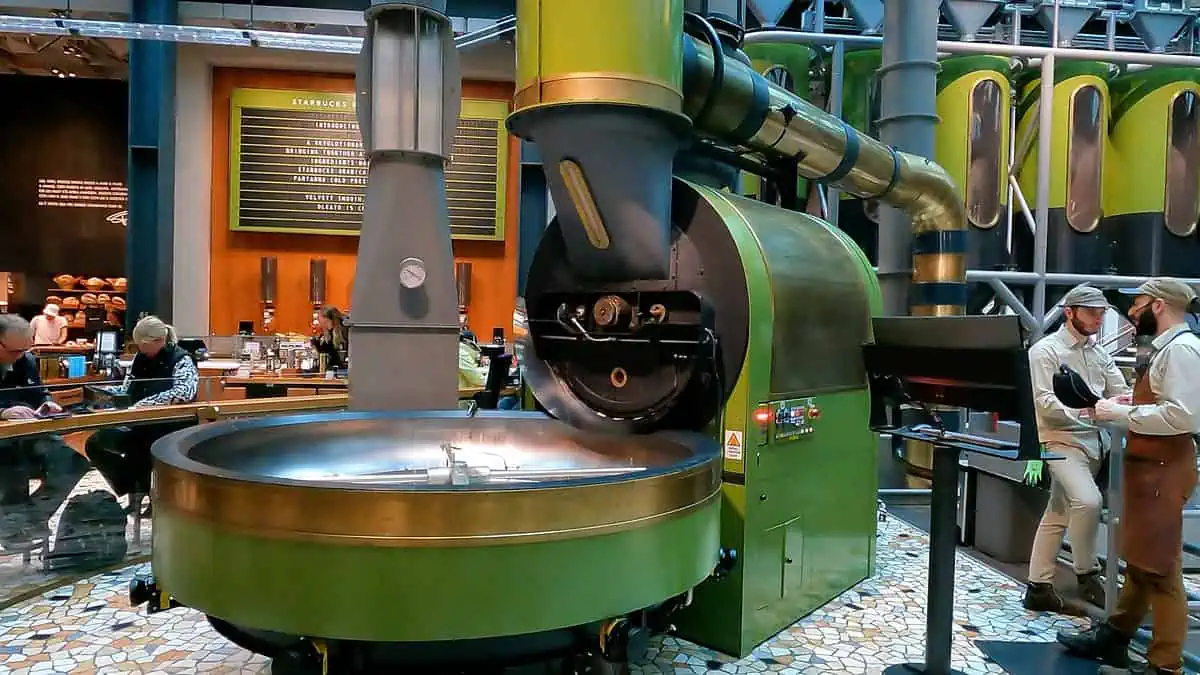
In Italy, espresso shots are far more frequently offered with coffee, which is frequently sipped while standing at the counter during brief rituals. Howard Schultz initially got the idea to sell espresso-based drinks to American consumers in Milan.
Hence, Starbucks had to take a unique approach to introduce their preferred method of coffee drinking to Italy. We believe they were a success in Milan, where in 2018 they opened the Starbucks Reserve Roastery in what had previously been the city’s stock market and post office.
Although others have since opened, it was the third Roastery in the world when it first debuted. There is no doubt that a Starbucks Roastery is not your typical Starbucks. It’s a wonderful experience to be able to see the entire coffee roasting process take place in front of you.
A wide variety of coffee beverages and preparation methods are also available, including regular coffees, coffee-based cocktails, pour-over coffees, and more. Also, there is a shop on the property where you can buy a variety of coffees and coffee-related items.
Overall, we consider this to be a worthwhile Milan stop. It’s interesting to watch the coffee roasting process in action, and the interior architecture is lovely. Also, the coffee and mocktails we drank were excellent.
Chiesa di San Maurizio al Monastero Maggiore: The Milan Sistine
Early 16th-century church Saint Maurice al Monastero Maggiore is sometimes referred to be Milan’s Sistine Chapel. It was dedicated in 1518, is still a functioning church today, and also serves as a venue for musical performances.
We urge you to stop in because the interior is extremely stunning. This is due to the amazing frescoes from the 16th century that seem to grace every accessible space. They show a variety of scenarios, including those from Saint Maurice’s life and well-known biblical stories like the story of Noah’s Ark.
Although it is free to visit, we strongly advise donating because volunteers keep it open. The official website has information on hours of operation and other details.
The church is connected to Monastero Maggiore, a Benedictine convent that is now the Municipal Archaeological Museum. The museum has admission costs.
The Campari Cocktail: One Of The Best Drinks To Have In Milan
A Campari cocktail is an excellent option to take into consideration if you’re trying to decide what kind of aperitivo to have in Milan.
Campari is one of the most well-known alcoholic drinks created in Italy. This alcoholic beverage was created in Novara, Italy, around 1860 and is distinguished by its bitter flavor and crimson hue (about 50km west of Milan). With a facility in the Milanese suburb of Sesto San Giovanni, production started in 1904.
Currently, a variety of well-liked cocktails contain Campari. It serves as the foundation for popular drinks like the Americano and the Negroni (which include gin, vermouth, and Campari) (sweet vermouth, soda water, and Campari).
You may also combine it with soda water (Campari & soda), orange juice (Garibaldi cocktail), still white wine (Pirlo), or sparkling wine for something a little lighter (Campari spritz).
While Campari is available across Milan, the Camparino in Galleria in the Vittorio Emanuele II Galleria offers a unique experience. By the door that opens closest to the Duomo. Gaspare Campari first established this Campari Bar as a wine shop in the mall. However, in 1915, it was converted into a bar.
It has been serving a variety of customers drinks made with Campari for more than 100 years. Also, they provide coffee if you decide it’s too early for a Campari. And, in case you’re wondering, here’s the low down on Italy’s drinking age!
Try Milanese Food
Like many other regions of northern Italy, Milan boasts a variety of regional foods that you should sample while there. Several of these are fairly hardy, and some are only available in the winter when it’s colder.
You’ll note, for example, that rice and polenta meals are far more prevalent here than in Italy’s more southern regions. Meats cooked in a stew in a pot are also common. Grana Padano, the most well-known cheese from the area, and local salami are typically found in cheeseboards there.
You should attempt some of the highlights, such as:
- Risotto alla Milanese – This simple, substantial risotto is a true Milanese classic. The saffron used in the cooking process gives the food its golden yellow hue. It can be served either by itself or with a dish like roasted bone marrow or Ossobuco.
- Ossobuco – Veal shanks that have been braised after being cooked in a skillet make the ideal Ossobuco accompaniment for risotto.
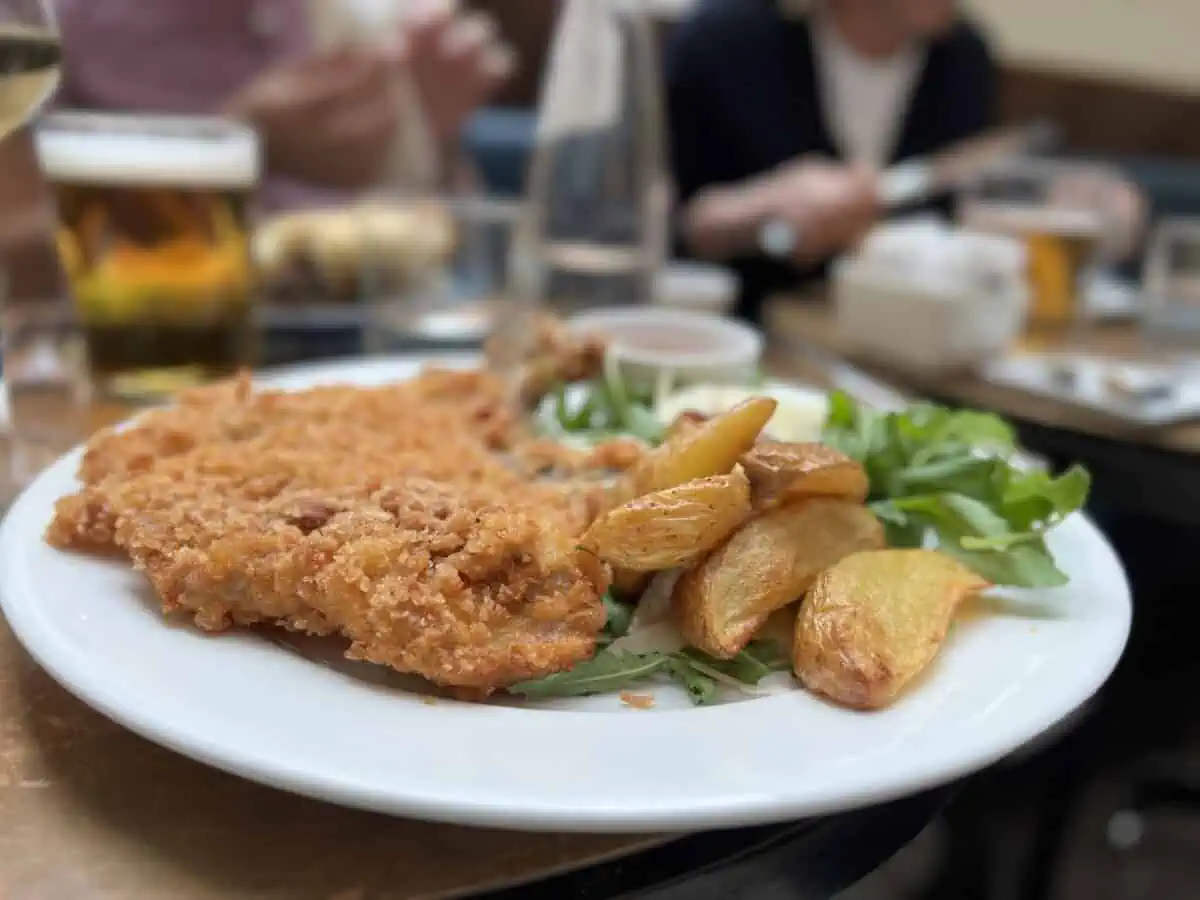
- Cotoletta alla Milanese – a mouthwatering breaded and fried veal cutlet. This meal is offered all around Milan and is highly well-liked.
- Stuffed pasta dishes – In this region, stuffed pasta like ravioli, casoncelli, and tortellini are extremely popular. The common ingredients in stuffings are cheese, meat, and herbs.
- Polenta – There are many different ways to season and serve this Italian delicacy, which is created with boiling cornmeal. It could be used as a side dish or a main course.
- Cassouela – Warming pork and Savoy cabbage stew. Ideal for keeping you toasty on a chilly day! served frequently with polenta.
- Panettone – Not everything is savory! This sweet bread with dried fruit and nuts is one of Milan’s most well-known meals. Although you can usually find it year-round, Christmas is when it’s most frequently eaten. Indeed, we celebrated Christmas with this last year.
Sightseeing Passes in Milan
We always check to see if a city tourist pass is available before visiting to see if we can save money. They frequently involve public transportation as well as free or reduced admission to attractions.
The following are the main passes available in Milan:
Milan Pass
A hop-on, hop-off bus, free admission to many museums, including La Scala and the Duomo with rooftop access, and the choice to incorporate public transportation are all included in this 48-72 hour city pass.
Milano Card
This card offers free public transportation as well as discounts to several museums and attractions. 1 to 3 days are possible.
Tourist Museum Card
The eight museums in Castle Sforzesco and five other museums are accessible with this three-day pass to Milan’s civic museums. If the museums it covers are on your agenda, it’s a fantastic value card.
How to Get Around Milan
Although Milan is a seizable city, its old city center is not overly expansive and is accessible on foot. Nonetheless, the city has an outstanding public transportation system. It includes an underground metro system, buses, and trams if you need to travel outside of the city center or simply don’t feel like walking.
Hop on Hop off Bus Tour
Consider taking a Hop on Hop Off bus tour if you want a simple way to travel between the city’s top attractions and want an audioguide to help you get to know Milan.
A hop-on hop-off bus trip is something we always like doing, especially when we are in a new location. It is an effective way to learn about a city’s layout and take in its top attractions. They free us from the burden of using the public transportation system. It also allows us to relax our feet after a day of sightseeing.
They can also be a highly practical method to travel between the sights if you do some planning. We advise mapping out your route so that the bus stops align with yours.
These buses cover most of the locations that most visitors would wish to visit in Milan. They are a fantastic choice if you don’t want to use Milan’s public transportation.
Where to Stay in Milan
The main center of Milan is conveniently walkable. Yet like other great cities, Milan offers many more attractions outside its center area (central Milan). The nine administrative districts of the city each have something special to offer. It is not only Italy’s industrial hub but also a fashion hub with a thriving student population. This implies that there will be plenty of affordable housing and fun nights out.
Room Mate Giulia
The most frequently suggested option on Trip Advisor is this trendy 4-star hotel. The rooms have high-end designer furniture, air conditioning, minibars, safes, flat-screen TVs, hairdryers, and designer amenities. They are also unique and artistic. A bar, hammam, sauna, spa, fitness center, and others are also on-site at the hotel.
Everything you possibly want is within a 5-minute walk. The majestic Galleria Vittorio Emanuele II and the Duomo are just outside the door. It takes 5 minutes to walk to the Royal Palace and Theatre Alla Scala. There are many interesting places to visit and direct connections to Milan central station.
Mandarin Oriental Milan
The Brera neighborhood is home to the Mandarin Oriental Milan, a 5-star hotel from a well-known luxury brand. The rooms in this luxurious hotel are tastefully decorated. It includes high ceilings, spacious, comfortable beds with premium linens, minibars, electric kettles, modern bathrooms, and name-brand amenities.
You will have access to various amenities without leaving the hotel, thanks to the on-site gym, swimming pool, bar, and lounge and the neighboring spa, golf course, and swimming pool. Shopping and dining options abound in the area. It is adjacent to the Montenapoleone metro station and ten-minute walk from the Duomo.
Conclusion
It’s wonderful to travel to Milan. There are many other things there that you can enjoy as well, including history and fashion. Furthermore, it’s a terrific spot to call home if you’re seeking a vibrant city with lots going on.
Milan is the destination if you’re seeking anything more than just the typical tourist attractions. Many activities are available, like eating delicious Italian food and visiting museums and galleries. Also, you can benefit from Milan’s diverse nightlife options, which include jazz bars and nightclubs.
Those who desire something new from their travels will love Milan. It is a city brimming with life and vitality. This may be the perfect spot for you if you enjoy discovering new places and meeting new people!
